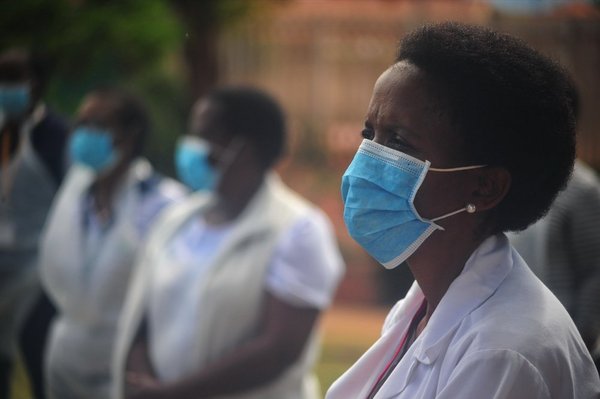- Share this article
- Subscribe to our newsletter
Forestalling an Era of Pandemics
In future, pandemics will emerge more often according to experts from the Intergovernmental Science-Policy Platform on Biodiversity and Ecosystem Services (IBES), the United Nations Environment Programme (UNEP) reported on its website in late October 2020. Escaping the era of pandemics is possible, but experts agree that this will require a seismic shift in approach from reaction to prevention.
COVID-19 is at least the sixth global health pandemic since the Great Influenza Pandemic of 1918, and although it has its origins in microbes carried by animals, like all pandemics its emergence has been entirely driven by human activities, the experts stated in their currently released report. It is estimated that another 1.7 million currently ‘undiscovered’ viruses exist in mammals and birds – of which up to 850,000 could have the ability to infect people.
How to lower the risk of pandemics
Pandemic risk can be significantly lowered by reducing the human activities that drive the loss of biodiversity, by greater conservation of protected areas, and through measures that reduce unsustainable exploitation of high biodiversity regions. This will reduce wildlife-livestock-human contact and help prevent the spillover of new diseases, according to the experts.
Relying on responses to diseases after their emergence, such as public health measures and technological solutions, in particular the rapid design and distribution of new vaccines and therapeutics, is a “slow and uncertain path”, underscoring both the widespread human suffering and the tens of billions of dollars in annual economic damage to the global economy of reacting to pandemics.
The experts estimate the cost of reducing risks to prevent pandemics to be 100 times less than the cost of responding to such pandemics, “providing strong economic incentives for transformative change.”
Policy options to reduce pandemic risk
In their report, the experts offer a number of policy options that would help to reduce and address pandemic risk. Among these are:
- Launching a high-level intergovernmental council on pandemic prevention to provide decision-makers with the best science and evidence on emerging diseases; predict high-risk areas; evaluate the economic impact of potential pandemics and highlight research gaps. Such a council could also coordinate the design of a global monitoring framework.
- Countries setting mutually-agreed goals or targets within the framework of an international accord or agreement – with clear benefits for people, animals and the environment.
- Institutionalising the ‘One Health’ approach in national governments to build pandemic preparedness, enhance pandemic prevention programmes, and investigate and control outbreaks across sectors.
- Developing and incorporating pandemic and emerging disease-risk and health impact assessments in major development and land-use projects, while reforming financial aid for land-use so that benefits and risks to biodiversity and health are recognized and explicitly targeted.
- Ensuring that the economic cost of pandemics is factored into consumption, production, and government policies and budgets.
- Enabling changes to reduce the types of consumption, globalised agricultural expansion and trade that have led to pandemics – this could include taxes or levies on meat consumption, livestock production and other forms of high pandemic-risk activities.
- Reducing zoonotic disease risks in the international wildlife trade through a new intergovernmental ‘health and trade’ partnership; reducing or removing high disease-risk species in the wildlife trade; enhancing law enforcement in all aspects of the illegal wildlife trade and improving community education in disease hotspots about the health risks of wildlife trade.
- Valuing Indigenous Peoples and local communities’ engagement and knowledge in pandemic prevention programmes, achieving greater food security, and reducing consumption of wildlife.
- Closing critical knowledge gaps such as those about key risk behaviours, the relative importance of illegal, unregulated, and legal and regulated wildlife trade in disease risk, and improving understanding of the relationship between ecosystem degradation and restoration, landscape structure and the risk of disease emergence.
(UNEP/ile)
Read more at UNEP website


